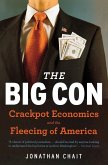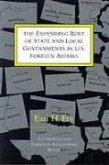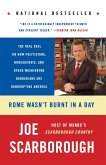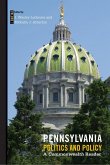Despite abundant conjecture in the scholarly community, and heated rhetoric in state capitols throughout the land, there is remarkably little evidence that state governments can have any effect at all on the economic performance of their states. Working from a broadened historical perspective, and employing political and economic analysis, Paul Brace places the states and their economies in a more understandable light in State Government and Economic Performance. Over time the states have manifested differing degrees of economic activism with notable success. For much of the twentieth century, the dominance of the federal government and the extensive reach of the national economy overwhelmed state-level economic efforts. By the end of the 1970s, however, states began to show greater diversity in their economic performance. Beginning in the Reagan administration, shifting federal priorities and declining resources from Washington forced states to be increasingly self-reliant. In this new, more challenging environment, state-level activism reemerges as an important influence on income growth. The book concerns the economic fortunes of all states, but turns to four case studies to describe in depth how states have responded to economic and political challenges since the 1960s. For example, Arizona and Texas enjoyed booms, but this prosperity was due to forces outside their boundaries. Their traditions of weak government and minimal intervention served them well when the national economy was expanding, yet they were unprepared to stimulate their own economic development in the more challenging environment of the 1980s. Michigan and New York, which initially experienced slow growth, managedto stimulate economic performance because of strong government apparatus and interest - although they too were seriously challenged as the national economy slowed in the early 1990s. These contrasting experiences allow Brace to propose a model for evaluating the economic impact of state government and policy in a changing national economic context. Brace observes that the institutional characteristics of states, the policies they adopt, and their levels of taxation all have statistically discernible effects on their rates of growth in income, but little impact on employment or manufacturing growth. "In essence", he writes, "the institutionally more powerful, entrepreneurial state has been better suited to sustain income in the changing environment of the 198Os". At the same time, however, income growth may serve to retard other forms of growth, most notably in jobs, because of the mobility of capital and labor between the states. Because of this, the states face formidable, even insurmountable, structural barriers to self-sustained economic development. As open economies they are extremely sensitive to competition from other jurisdictions, and ultimately this undermines long-range intervention by the states.
Hinweis: Dieser Artikel kann nur an eine deutsche Lieferadresse ausgeliefert werden.
Hinweis: Dieser Artikel kann nur an eine deutsche Lieferadresse ausgeliefert werden.








